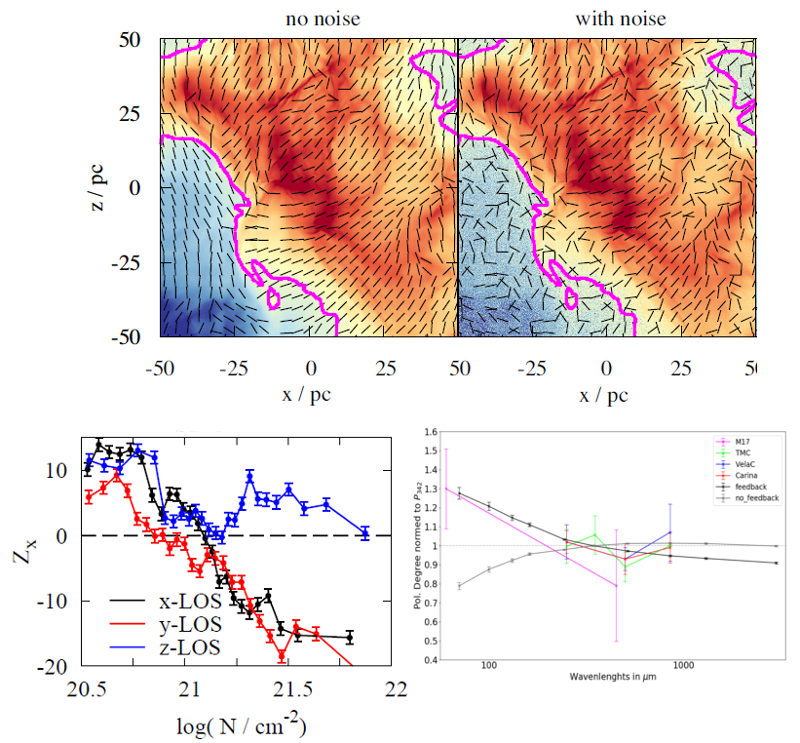| EPoS Contribution |
|
What can we learn from synthetic polarisation observations? Insights into the dynamics and dust properties of molecular clouds
Daniel Seifried U Koeln, Cologne, DE | |
| I present results of our work where we, for the first time, combine 3D-MHD simulations of molecular cloud (MC) formation and a fully self-consistent dust polarisation radiative transfer including the treatment of the dust microphysics in order to generate synthetic dust polarisation maps. Doing so we can for the first time assess the reliability of dust polarisation observations needed due to the ever growing number of polarisation observations. In addition, I will also show that polarisation observations of MCs mainly probe the dense parts of MCs up to densities of about 1000 cm-3 and visual extinctions AV > 1. Furthermore, I will shed light on the dynamical importance of magnetic fields. For this I present the combined results of two different types of simulations of MC formation, their self-consistent synthetic dust polarisation maps and analytical considerations. I will show that the magnetic field reaches an orientation perpendicular to (column) density structures only for clouds which have a mass-to-flux ratio close to or below the critical mass-to-flux ratio. This corresponds to a field strength of about 5 μG, i.e. close to the Milky Way average. Moreover, I demonstrate that projection effects strongly affect the observed orientation of magnetic fields, which can explain the observed variety in actual recent observations. Finally, I will present ongoing research on what we can learn from polarisation degree spectra about the underlying dust properties. This topic has drawn only very little attention from the theoretical side, despite a growing number of corresponding observations. Using for the first time 3D-MHD simulations, I will show in detail the effect of the dust size distribution, dust growth, but also of radiative stellar feedback on the observed (synthetic) polarisation spectrum. | |
 | |
| Caption: The figure shows the various aspects covered in the talk: Top row: Effect of observational noise on the accuracy of dust polarisation observations. Only in the regions within the pink contours the polarisation pattern (black bars) can be trusted. Bottom left: Projected Rayleigh Statistics to probe the relative orientation of magnetic fields and density structures (Zx < 0 corresponds to a perpendicular orientation). For the same cloud, the observed result strongly depends on the considered line-of-sight, demonstrating the importance of projection effects. Bottom right: Synthetic polarisation degree spectrum of an MHD simulation excluding (grey line) and including stellar feedback (black line). The results can be compared to actual observations. | |
| Collaborators: S. Walch, U Cologne, DE S. Reissl, ITA Heidelberg, DE J. Soler, MPIA, DE |
Key publication
Suggested Session: Magnetic Fields |

